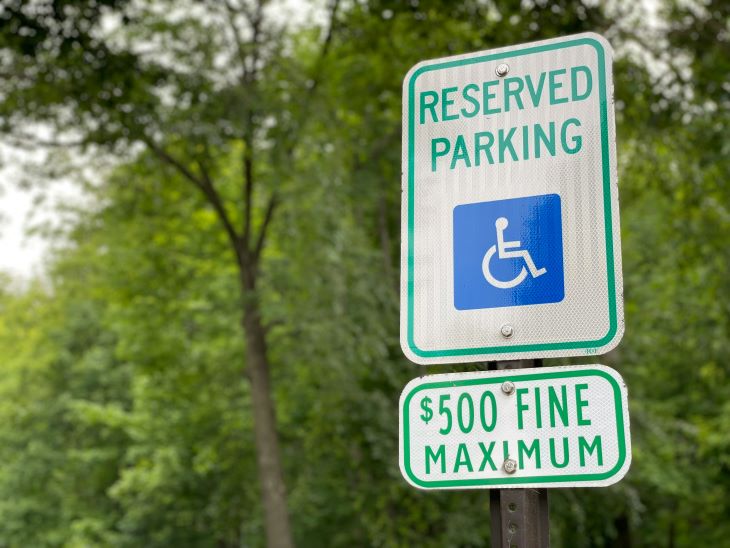Accessible parking is an important aspect of ensuring equal access for individuals with disabilities. California’s approach to accessible parking reflects its commitment to upholding the rights and dignity of all its residents, regardless of their physical abilities. The state has implemented federal and state laws and regulations designed to safeguard the accessibility of parking facilities and uphold the principles of equality and inclusion. By familiarizing yourself with these laws, individuals can navigate the rules of accessible parking with confidence and ensure that the needs of people with disabilities are met effectively.
Understanding California Handicap Parking Laws
When traveling in California, individuals must understand that handicap parking laws are designed to provide equitable access to parking spaces for individuals with disabilities. Accessible parking spaces are designated specifically for use by individuals with disabilities and are subject to strict regulations regarding their size, location, and signage.
Accessible Parking in CA: Regulations and Requirements
The regulations governing accessible parking spaces in California cover various aspects,, which need to meet certain criteria:
- Size: Accessible parking spaces are typically larger than standard parking spaces to accommodate wheelchair users and individuals with mobility aids comfortably. In California, the standard size for accessible parking spaces is typically 8 feet wide with an adjacent access aisle of at least 5 feet wide. This extra space allows individuals to maneuver in and out of vehicles with ease and provides room for deploying ramps or lifts from wheelchair-accessible vehicles.
- Accessibility Standards: The parking space and its adjacent access aisle must meet specific accessibility standards outlined in the Americans with Disabilities Act (ADA) and California Building Code. This includes requirements for the slope of the parking space, the smoothness of the surface, and the absence of obstructions that could impede access for individuals with disabilities.
- Signage and Markings: Accessible parking spaces must be clearly marked with signage indicating their designation for individuals with disabilities. In California, these signs typically feature the international symbol of accessibility (a white symbol of a person in a wheelchair on a blue background), and may include additional wording such as “Accessible Parking” or “Handicap Parking.” Additionally, the access aisle adjacent to the parking space must be marked with diagonal stripes to prevent it from being blocked by other vehicles.
- Proximity to Building Entrances and Facilities: Accessible parking spaces should be located close to building entrances, amenities, and facilities to minimize the distance individuals with disabilities need to travel. In California, regulations specify the minimum number of accessible parking spaces required for different types of facilities based on their size and occupancy, ensuring that adequate parking is available near entrances.
- Accessibility Features: Accessible parking spaces may include additional features to enhance accessibility, such as curb ramps or sloped pathways leading to building entrances, tactile paving to assist individuals with visual impairments in navigating the area safely, and designated loading zones for wheelchair-accessible vehicles.

How to Obtain a Handicap Placard in California
Obtaining a handicap placard in California requires meeting eligibility criteria set by the DMV. The application process involves submitting the necessary documentation and completing the required forms.
Here’s further information to qualify for a handicapped parking placard in California, officially known as a Disabled Person (DP) placard or license plate. Individuals need to meet the criteria set by the California Department of Motor Vehicles (DMV), which typically include the following:
- Mobility Impairment: The individual must have a mobility impairment that substantially limits or impairs their ability to walk. This impairment may be due to a variety of conditions, including but not limited to paralysis, neurological disorders, orthopedic injuries, or the use of mobility aids such as wheelchairs, crutches, or walkers.
- Medical Certification: The applicant must provide medical certification from a licensed healthcare provider, such as a physician, surgeon, chiropractor, nurse practitioner, or physician assistant, confirming the existence and nature of their disability. This certification typically includes details about the individual’s condition and its impact on their mobility.
- Temporary vs. Permanent Disability: Handicap parking permits in California are available for both temporary and permanent disabilities. Temporary permits are issued for conditions expected to last six months or less, while permanent permits are issued for conditions expected to last longer than six months or indefinitely.
- Specific Conditions: The DMV provides a list of specific conditions that may qualify an individual for a handicapped parking permit. This list includes but is not limited to, conditions such as being unable to walk 200 feet without stopping to rest, requiring portable oxygen, and having a cardiac condition classified in severity as Class III or IV according to the standards of the American Heart Association, and being severely limited in their ability to walk due to an arthritic, neurological, or orthopedic condition.
Tips for Navigating Accessible Parking in California
Navigating accessible parking in California can sometimes be challenging, but knowing your rights and responsibilities is essential. Avoiding common mistakes and misconceptions, such as misusing handicapped parking spaces, is crucial for maintaining accessibility for those who need it most. Additionally, advocating for accessible parking spaces in your community can help ensure that the needs of individuals with disabilities are met.
You can learn more about handicapped parking etiquette on the Dr. Handicap blog.
Following the Rules
Accessible parking is a fundamental aspect of ensuring equal access for individuals with disabilities in California. By understanding the laws and regulations governing handicapped parking, individuals can navigate the system effectively while respecting the needs of others. Adhering to California’s handicap parking laws not only promotes inclusivity but also fosters a more accessible environment for all. For further information on accessible parking in California, you can see the resources provided by the DMV, and disability advocacy organizations can offer valuable guidance.
Featured image by Lala Miklós on Unsplash.
